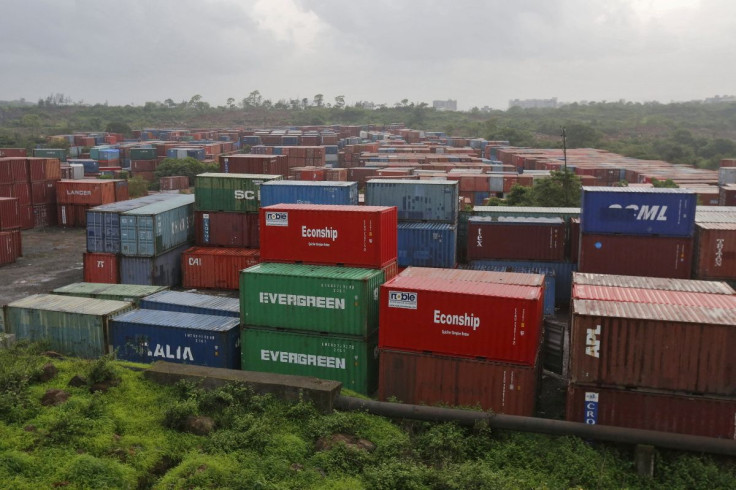INSTC To Change Global Trade Map, Offers Sea Of Opportunities For Iran, Russia And India

With the new trade route International North-South Transport Corridor (INSTC) taking shape, the world trade map is set for a sea change.
The INSTC, a 7,200 km-long multimodal transportation network encompassing sea, road, and rail routes, involving sanctions-hit Iran and Russia and India, is the shortest, fastest, cheapest, and most secure route between South Asia and Europe.
On 14 June, Iran's state-run shipping company said that it had successfully completed the first transit of Russian goods to India through the INSTC. The test cargo included two 40-foot containers of wood laminate sheets, amounting to 41 tons.
Iran, Russia, and India have been mooting a sea and rail hook-up to link South Asia to northern Europe bypassing Egypt's Suez Canal and China's ambitious Belt and Road Initiative (BRI). The INSTC will cut the distance by 40 percent and costs by 30 percent.
India is worried about China's influence in its immediate neighborhood and Central Asia. The warming ties between China and Russia and China's all-weather friendship with Pakistan have forced India to promote INSTC as a viable and fairer alternative to China's Belt and Road Initiative, an $8-trillion initiative.
The INSTC will link India's largest container port, Jawaharlal Nehru Port in Mumbai, through the Iranian deep-sea port of Chabahar, which would bypass India's rival Pakistan, with Russia's Caspian harbor of Astrakhan at the mouth of the Volga and onwards by rail to Europe.
Goods departing St. Petersburg can be reached by rail at a container terminal at Solyanka, in Astrakhan, where the Volga River merges with the Caspian Sea. From there, they are moved by ship to Bandar Anzali, a port at the southern end of the Caspian Sea. From there via a rail network to Chabahar port in south-eastern Iran. Finally, they will pass through the Gulf of Oman and the Arabian Sea to reach India.
The Solyanka trade zone is jointly operated by Iran and Russia, which is looking for new markets in the east following US-led Sanctions. Iran is trying to emerge as a regional hub by bypassing Saudi Arabia and the United Arab Emirates (UAE).
Iran is working on the completion of two missing rail links along the INSTC route which will boost transit through the corridor as it can be expanded to be used for connectivity with Afghanistan and Central Asia. A rail link connecting Chabahar to Uzbekistan is being built in phases to speed the transit of goods to large markets of Central Asia.
In 2016, India signed a deal with Iran promising an $8-billion investment in the port and industries in the Chabahar Special Economic Zone. In February 2019, landlocked Afghanistan started a new export route to India through the port.
Connectivity at INSTC topped the agenda of the Iranian foreign minister Hossein Amir-Abdollahian to Delhi during his visit to India recently.
As Russia is concerned, Moscow can become part and parcel of a robust alternative trading system in which it is not isolated. INSTC can reduce the isolation of Iran and Russia as no external party is in a position to police it as it falls under the Russian sphere of influence.
The sanctions have led to an exodus of Western firms from Russia and India is keen on filling up the vacuum. India's exports to Russia reached $3.24 billion in 2021-22, up from the pre-pandemic figure of $3 billion while imports rose by $9.86 billion, of which $5.25 billion was crude oil, processed petroleum and coal.
The new route will ensure greater connectivity and will give India access to the high-potential markets of the adjoining Commonwealth of Independent States (CIS) countries.
Russia and India have made commitments to hike their bilateral trade by $5 billion per annum for the next four years.
India has started talks to ink a Free Trade Agreement (FTA) with the Eurasian Economic Union, which includes Russia, Armenia, Belarus, Kazakhstan and Kyrgyzstan.
INSTC's North-South transport corridor was started in 2000 by Russia, Iran, and India. Later, Azerbaijan joined it in 2005. This pact has been ratified by 13 nations, like Azerbaijan, Belarus, Bulgaria, Armenia, India, Iran, Kazakhstan, Kyrgyzstan, Oman, Russia, Tajikistan, Turkey, and Ukraine. They want to make INSTC an alternative to the Suez Canal and Mediterranean trade routes.
Asian transportation networks are largely linked with their ports to European industrial centers, a practice dating back to the colonial era. Rather than relying upon Western markets, the idea is to build complementary economic links within Asia.
With The INSTC, the South-South trade and development have gathered steam so also the geopolitical reordering of the world's trade map.





